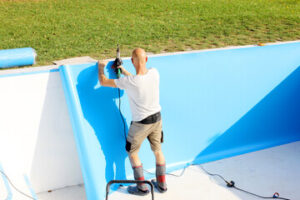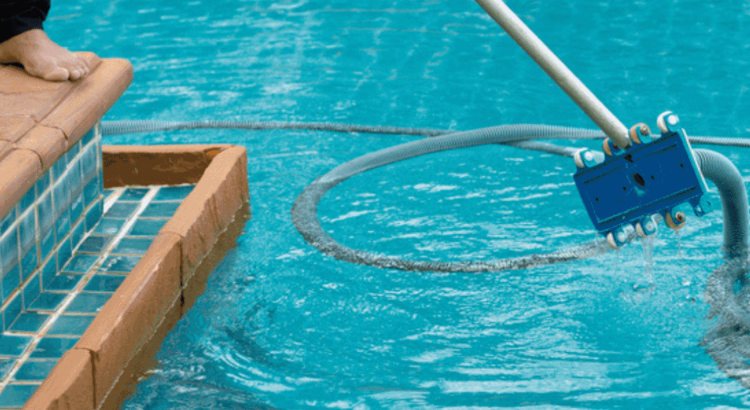Roof Cleaning Summerville SC build, inspect, repair, and replace roofs for residential and commercial buildings. They also bind, seal, insulate, and soundproof walls and floors.
Roofers work as a team, collaborating with contractors, carpenters, and electricians. They must have good customer service and communication skills.
People in this career typically have Realistic interests. They prefer tasks that are hands-on and practical.
A roofer repairs various issues with roofing, including leaks and deterioration. A roof is a crucial part of the house, and it must be strong and watertight to protect the underlying materials.
The first thing a roof repairer has to do is find the problem. This requires a thorough inspection, both inside and out. Look for water stains, black marks or mold, and puddles of standing water. Then trace the trail back to where it came from – this is usually a roof section with poor flashing or other problems.
To fix the leak, a roofer often reseal the area and replace the damaged shingle. A shingle is the covering that covers and protects a piece of sheathing beneath, so it is essential to have a good one. Getting the sheathing in good shape is also necessary to prevent future problems.
A roofer will use different methods to reseal the leaky areas of a roof, depending on the specific problem. For example, a roofer may reseal around the edges of chimneys and roof windows using a sealant or caulk. Other areas, such as the soffit/main roof joint, are more difficult to reseal. A good way to solve this is to lay a strip of adhesive ice-and-water barrier (available where roofing repair products are sold) across the gap, which will help stop leaks from rain and snow and maybe even ice dams.
Other repair jobs a roofer might tackle are broken or missing shingles. If access is easy, the shingles can be replaced with new ones. If the underlying sheathing is in bad shape, a roofer will fill the hole with a high-quality wood filler and caulk or tar to seal it.
Another common problem is a vent boot that needs better shape. These are usually plastic or metal and sit at the base of a vent pipe. To ensure it’s waterproof, a roofer will remove the vent boot and then replace or seal it. This will keep the water that might seep through the vent pipe from working its way into the house.
If you see shingles lying on the ground or notice water stains in your ceilings or walls, it’s time to call a roofer for a repair. It would be best if you also kept an eye out for cracking, tearing, and granule loss, which indicates the end of the life of your current roof. If you spot these problems, you must choose between a repair and a replacement. Homeowners who plan to sell their homes soon may want to consider a full roof replacement rather than patching leaks and damaged areas, as a fixed or repaired roof could lower the resale value of your home.
Roof replacement can be messy, and homeowners must make arrangements for pets and children while the work is done. The noise and dust can disturb dogs, cats, and even hamsters, so it’s a good idea to have them stay at a friend or boarding service during reroofing. The attic will collect the most debris during a reroof, so it’s wise to clear it beforehand and store sentimental or delicate items elsewhere.
Some things, like the geographic location of your home and weather conditions, will affect how much it costs to replace your roof. But other factors are within your control, such as the type of shingle and any alternate materials you decide to use for your roof. The cost of the materials and installation can be higher or lower depending on your choice, and you should consider any energy-efficient rebates that apply.
When choosing a roofing contractor for your roof replacement, look for one with an excellent reputation and experience working on residential houses in your area. Check their website for testimonials, and ask for references from previous clients. You should also request a quote for the job before hiring anyone. A reputable roofer will provide you with a detailed estimate that specifies all the expenses involved in the project. They may hide something if a company can’t or won’t give this information. Avoid contractors who demand a large upfront payment or agree to begin the work without inspecting your roof in person.
Your roof may seem like an insignificant part of your house, but it’s a system that performs critical functions. It sheds rain, keeps wind and snow out, protects the interior of your home, and allows air to circulate. Because of its important tasks, your roof needs regular inspections to ensure it’s working properly.
In addition to checking for current leaks, a roof inspector will examine the roofing materials for deterioration, aging, and damage, such as dislodged or missing shingles and curling, rust stains, moss growth, and algae formation. The condition of the pipe boots and flashing (the metal strips that divert water away from the joints in the roof structure caused by penetrations such as chimneys, vent pipes, dormers, and skylights) will also be assessed. Flashing that is damaged or corrupted can let water seep into the roof and cause damage to the interior and exterior walls of your home.
If the inspection reveals problems with the roofing material, your roofer can recommend appropriate roof repair or replacement options. If the problem results from improper installation or poor craft during previous repairs, addressing it early will reduce the risk of more expensive repairs.
Roof inspections can be conducted from the ground, but a professional roofer will always get on the roof to visually inspect its condition. This method is a lot safer than climbing up on a ladder, and it allows the inspector to assess the condition of the underlayment, shingle sheathing, gutters, and other components essential to the roof’s integrity.
Aside from identifying issues that require immediate attention, a roof inspection can help homeowners plan for the future. Suppose it’s time to renew your home insurance policy or sell your house. In that case, a recent roof inspection will provide proof of your roof’s condition, supporting your claim in an accident or natural disaster. A good quality, well-maintained roof can add substantial value to your property. Therefore, it is in your best interest to schedule periodic inspections of the roof and promptly repair as needed.
Keeping your roof in good condition requires routine inspections to spot trouble as it develops. These inspections should be done twice a year. The frequency of these inspections will vary based on where you live. For example, if your home is in a hurricane-prone region, you may need to have inspections more frequently.
A roof maintenance program should include three steps: a visual inspection, repairs, and documentation. The program should be tailored to each roof and consist of a historical file that documents the condition of the roof system. This file should include the original plans and specifications, a detailed repair history, warranties, and thorough documentation of roof maintenance. Building maintenance personnel should also be familiar with the contents of this file so they can take appropriate action if a problem is identified.
Look for loose shingles, cracks, or damage when visually inspecting. In addition, check for signs of moisture damage, such as rot and mold. Also, inspect for fungus, moss, and algae that can eat through the roofing materials.
It’s important to regularly clean your gutters to prevent the build-up of debris and clogging that can lead to water damage. It would be best to clear out any ice dams that form due to fluctuating temperatures. Be sure to remove snow as soon as possible since allowing it to pile up can cause significant damage and ice dams.
Other roof maintenance tasks include periodically surveying your chimney and its flashings for cracks or deterioration. Also, inspect all vent outlets and skylights for leakage problems. Finally, ensure your attic is properly ventilated to reduce stress on the roof. It’s also a good idea to insulate your attic, which can further reduce strain on the roof materials and prevent leaks.
Preventative maintenance can save you money and keep your roof in good shape. By catching problems before they develop, you can avoid expensive repairs and the potential damage to your roof decking, insulation, and ceiling. Work with a qualified roofing contractor and follow their maintenance plan for the best results.



